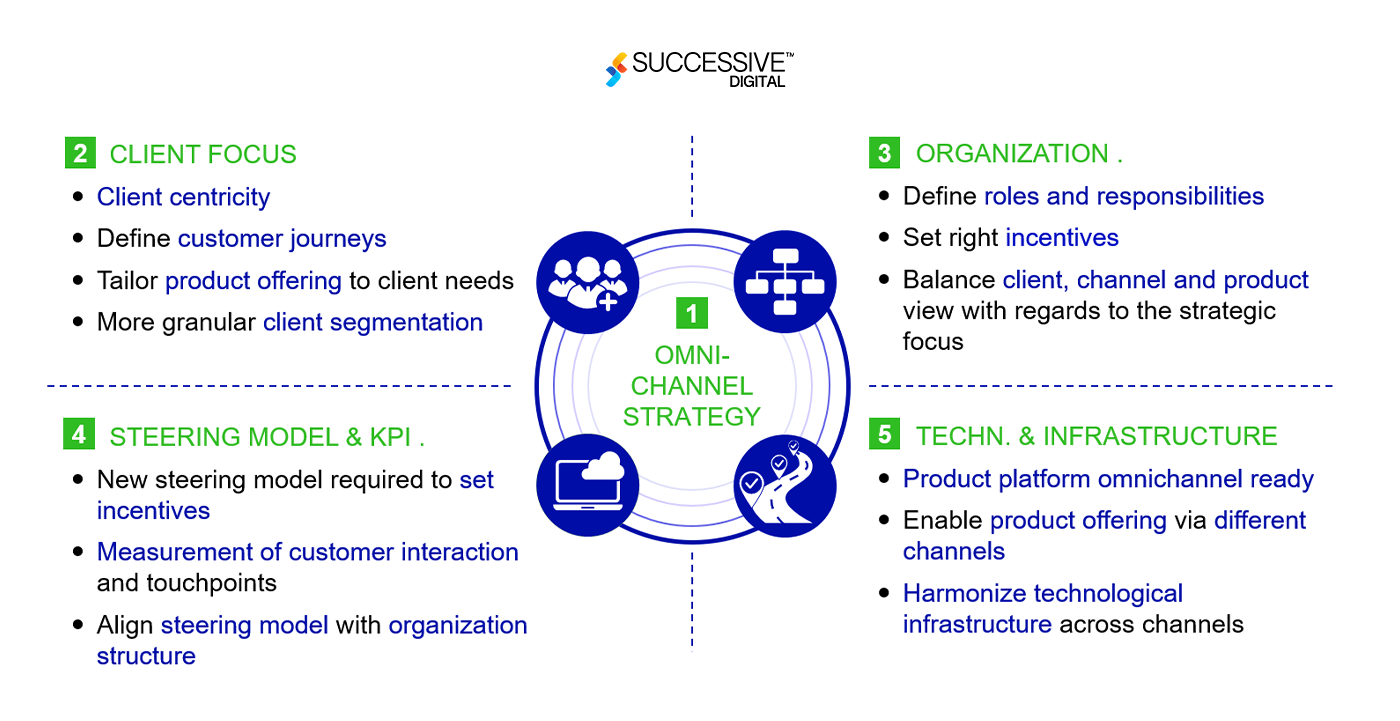Digital banking is characterized by excessive competition, with several players offering similar services and products. In such a situation, CX strategy in digital banking becomes a critical differentiator. CX best practices in banking includes more than just adopting an intuitive interface to traditional banking; it encompasses every customer touchpoint with the financial institution, from account opening and transaction processing to customer service and safety.
This blog explores the key components that constitute a solid CX strategy in digital banking. It also highlights the significance of user-centric design, omnichannel integration, personalization, advanced safety features, seamless onboarding, proactive customer support, continuous development, and technological innovation.
User-Centric Design
At the heart of any CX in digital banking is consumer-centric design. This method ensures that all elements of the digital banking platform are designed with the customer’s needs and options in thoughts. The user-centric layout includes:
- User Research: Conducting deep research to apprehend the target audience, their behaviours, needs, and pain points. Methods such as surveys, interviews, and user testing are important.
- Persona Development: Creating specified personas that represent the extraordinary user segments. These personas help in tailoring the digital banking experience to satisfy multiple user desires.
- Iterative Design: Employing CX best practices in banking along with an iterative layout process wherein prototypes are tested and refined based on user remarks. This ensures that the final product is intuitive and consumer-friendly.
- Journey Mapping: Charting out the journey of user to identify all touchpoints and interactions a account holder has with the bank. This allows in highlighting areas of friction and opportunities for improvement.
Omnichannel Integration

Customers nowadays count on a seamless experience through multiple channels, whether using a mobile app website or visiting a physical branch. Components of the CX strategy include omnichannel integration, ensuring that the consumer’s experience is consistent and cohesive across all touchpoints. Key factors encompass:
- Unified Interface: Providing a consistent look and experience across all digital channels to hold brand identification and simplicity of use.
- Cross-Channel Continuity: Ensuring customers can begin a transaction on one channel and complete it on another without disruption.
- Channel-Specific Optimization: While preserving consistency, optimize every channel for its precise context and utilization styles. For instance, a mobile app must prioritize easy navigation and quick access to often-used features.
Advanced Security Measures
In digital banking, robust security features are paramount to shielding customer information and retaining trust. CX best practices in banking encompass multi-factor authentication (MFA), which adds layers of protection beyond passwords by requiring verification through devices or biometrics. Encryption ensures that each one of the data exchanged between the bank and its customers is stable from unauthorized admission.
Real-time fraud detection systems also leverage analytics and machine learning (ML) to discover and prevent suspicious activities. Transparent privacy regulations further strengthen CX in digital banking by genuinely outlining data collection and usage practices, ensuring compliance with guidelines like GDPR and CCPA. These measures collectively support the security framework necessary for digital banking.
Personalization
Personalization is an effective tool for improving CX in digital banking. Banks can provide personalized recommendations by leveraging data analytics and ML. Key components of CX strategy include:
- Data Collection and Analysis: Gather data from diverse sources together with transaction history, personal conduct, and demographic records. Analyzing these data sets to gain insights into customer preferences and needs.
- Dynamic Content: Delivering customized content in real-time based on the consumer’s context and behavior, such as displaying personalized offers when a user logs into the mobile banking app.
- Personalized Recommendations: Algorithms are used in CX strategy for digital banking to offer personalized product and services, offers, and recommendations. This not only improves consumer satisfaction but also drives engagement and loyalty.
- Segmentation: Dividing the customer base into segments based on traits or behaviors. This CX best practices in banking allow targeted and relevant communication.
Seamless Onboarding
Seamless onboarding is crucial for making a high-quality first impression in digital banking. CX strategy in digital banking entails a simplified account opening method that allows customers to sign in effortlessly through digital channels without bulky paperwork. Digital verification techniques, including document scanning and biometric verification, streamline the account opening process, lowering friction.
Guided onboarding provides step-by-step help, ensuring CX best practices in banking are adopted so that customers can navigate the account opening process effortlessly. Immediate access to banking services minimizes wait instances and increases customer satisfaction. This streamlined technique not only complements the CX in digital banking but also speeds up user acquisition and engagement, laying a solid basis for an enduring banking relationship.
Proactive Customer Support
Proactive customer support is one of the essential components of CX strategy for maintaining a high degree of user satisfaction in digital banking. This consists of extending 24/7 assistance through various channels, consisting of chatbots, live chat, and phone call assistance, ensuring help is constantly available to account holders. Comprehensive self-service options like FAQs, know-how, and interactive tutorials empower customers to solve problems independently.
Proactive communication includes contacting clients with important banking updates, including transaction alerts, protection updates, and customized advice to prevent any future problems. Encouraging customer feedbacks and using them to improve services constantly ensures that the support system evolves with customer desires at core.
Conclusion
A robust CX strategy in digital banking is multifaceted, requiring a blend of consumer-centric approach, personalization, advanced security measures, seamless onboarding, proactive customer support, continuous improvement, and technological innovation. Banks can extend an improved user experience that not only meets but exceeds consumer expectations by focusing on such essential components of CX strategy, increasing brand loyalty, and aggressive business benefits within the digital age.











